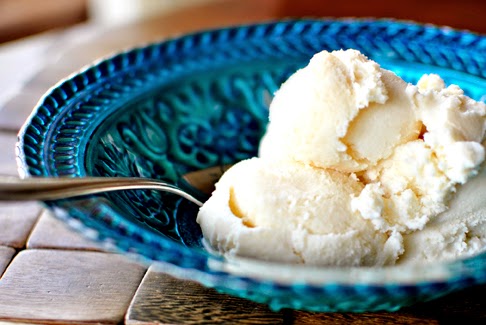Dog is the best friend
of man. That's a phrase you dog lovers agree with no doubt. When your
day brings you all the nasty things you didn't expect, after you get
home there's your doggy waiting to give you a warm pet-hug and to give a
full licking therapy to your face. That's love and care.

But my question is, do you care for your dog? You maybe tired with your busy routine, but always make time to care for your pet. There maybe lots of friends to care for you, but your pet only has you.
Now, Let's see how you are gonna love and care for your pet.
- Grooming
- Bathing
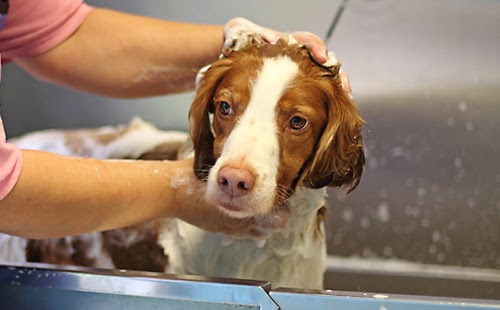
Do not bathe your dog more than once a month. Because, too frequent bathing washes off their natural oils and may result skin disorders. Use a dog shampoo or soap. Rinse it properly and towel-dry in the sun light.
- Brushing

Dogs with long hair must be brushed everyday. And the dogs with a smooth coat, once in two days. First brush your dog in the opposite direction of the coat and then back to normal.
- Ears
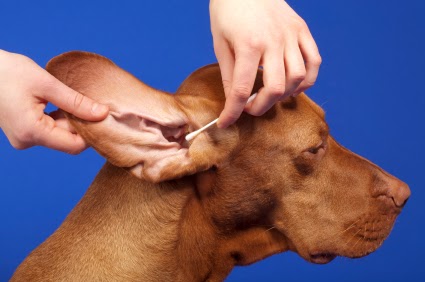
Keep your dogs ears clean with the help of a bud. Only clean the area which is visible to your eyes. And never put the bud deep into the ear. Clean its ears wit a wet cotton. But don't clean it everyday. Once a week is just enough. Because, the wax in its ears serves a protective purpose.
If your dog is with floppy ears, make sure to inspect its ears now and then. Because, due to lack of air going into the ears, fungal infections might take place.
- Eyes
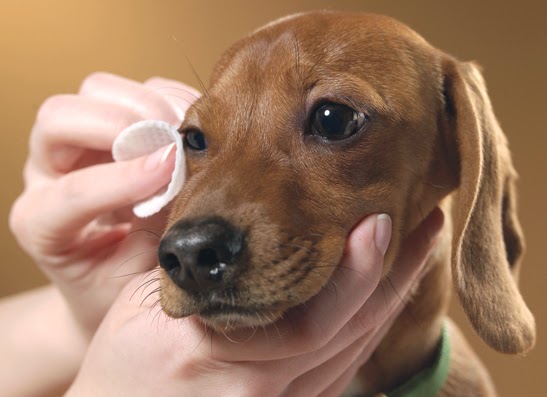
Clean your doggy's eyes with a wet cotton, only if you see a discharge which is not normal. Avoid cleaning its eyes every single day.
- Paws

Always keep an eagle eye on the paws of your doggy for cracks and rubbish etc.
- Nails
 Don't ever touch your dog's nails. Get your dog's nails trimmed by a vet. To make your dog's nails short naturally, tae it for regular walks. In fact, a dog that is exercised frequently does not need ts nails cut, as the act of walking itself trims the nails down.
Don't ever touch your dog's nails. Get your dog's nails trimmed by a vet. To make your dog's nails short naturally, tae it for regular walks. In fact, a dog that is exercised frequently does not need ts nails cut, as the act of walking itself trims the nails down.
- Housing
- In summer
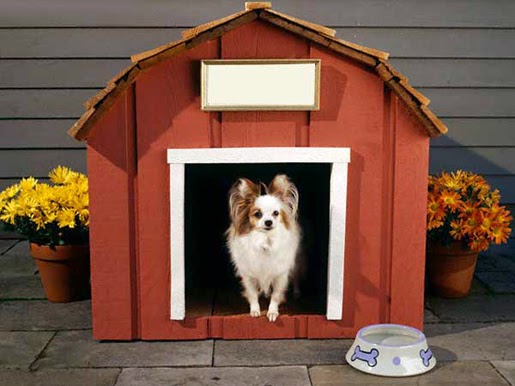
Make sure it is with adequate ventilation. Direct sunlight should be avoided. Always give your dog fresh water. Dogs sweat from their mouths so, don't tie their mouth for any reason.
- In winter
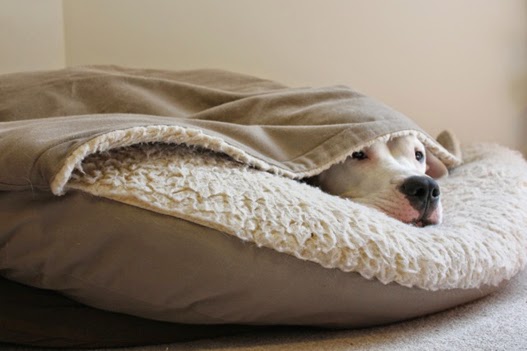
Provide him with a warm bed. You can even make a winter coat to your doggy from an old blanket. But make sure it is always dry. (See the illustration below)
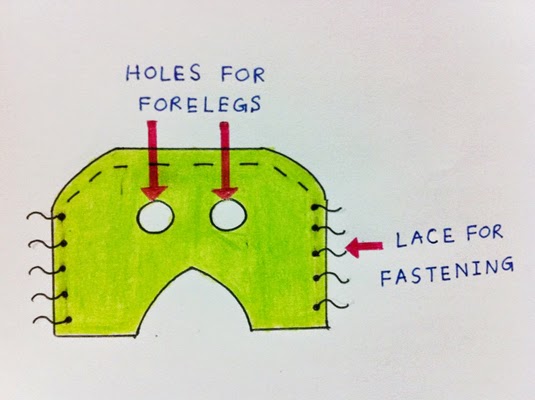
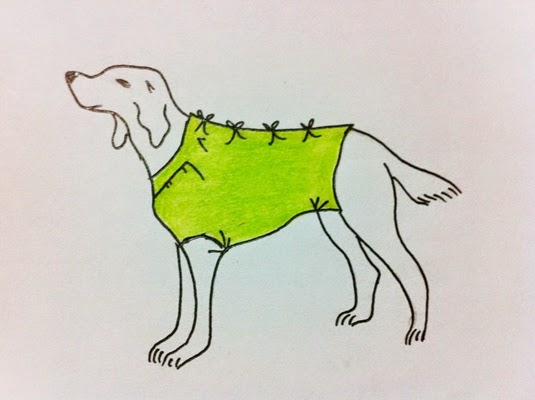
- Exercise
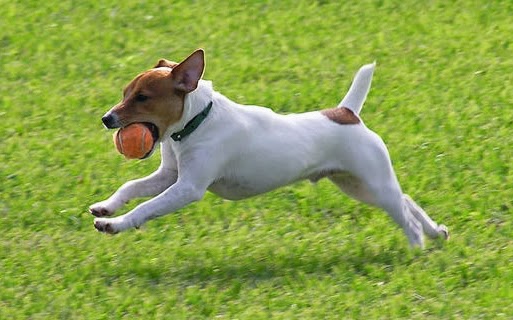
Your pet should get regular exercise. Morning and evening walks are a must. Don't keep your dog tied, as this leads to boredom and frustration. Dogs kept tied up always bite.
- Feeding

- Puppies for 1-4 monthsFeed time :
- 7:00 am - Whole milk, one crisp toast
- 11:00 am - one cup of lukewarm milk or porridge
- 2:00 pm - Grated carrot (Vitamin A), chopped onions (Minerals), Spinach (Iron) and rice all boiled together.
- 6:00 pm - Farex with milk
- 10:00 pm - one cup milk with Farex
- Orphaned Puppies up to 4 weeks
They must be fed on a milk substitute, every 2 hours for the first two weeks. Then, every three hours, with an eye dropper or a feeding bottle. Between 5 and 8 weeks, start with semi-solid foods 3 times daily.
- Vaccinating

- 30 days - Deworming
- 45 days - 6-in-1 ( distemper, parvo virus, hepatitis, leptosporasis, para-influenza)
- 2½ months - Booster
- 3 months - Anti-Rabies
Note: Each of these vaccines requires an annual booster







